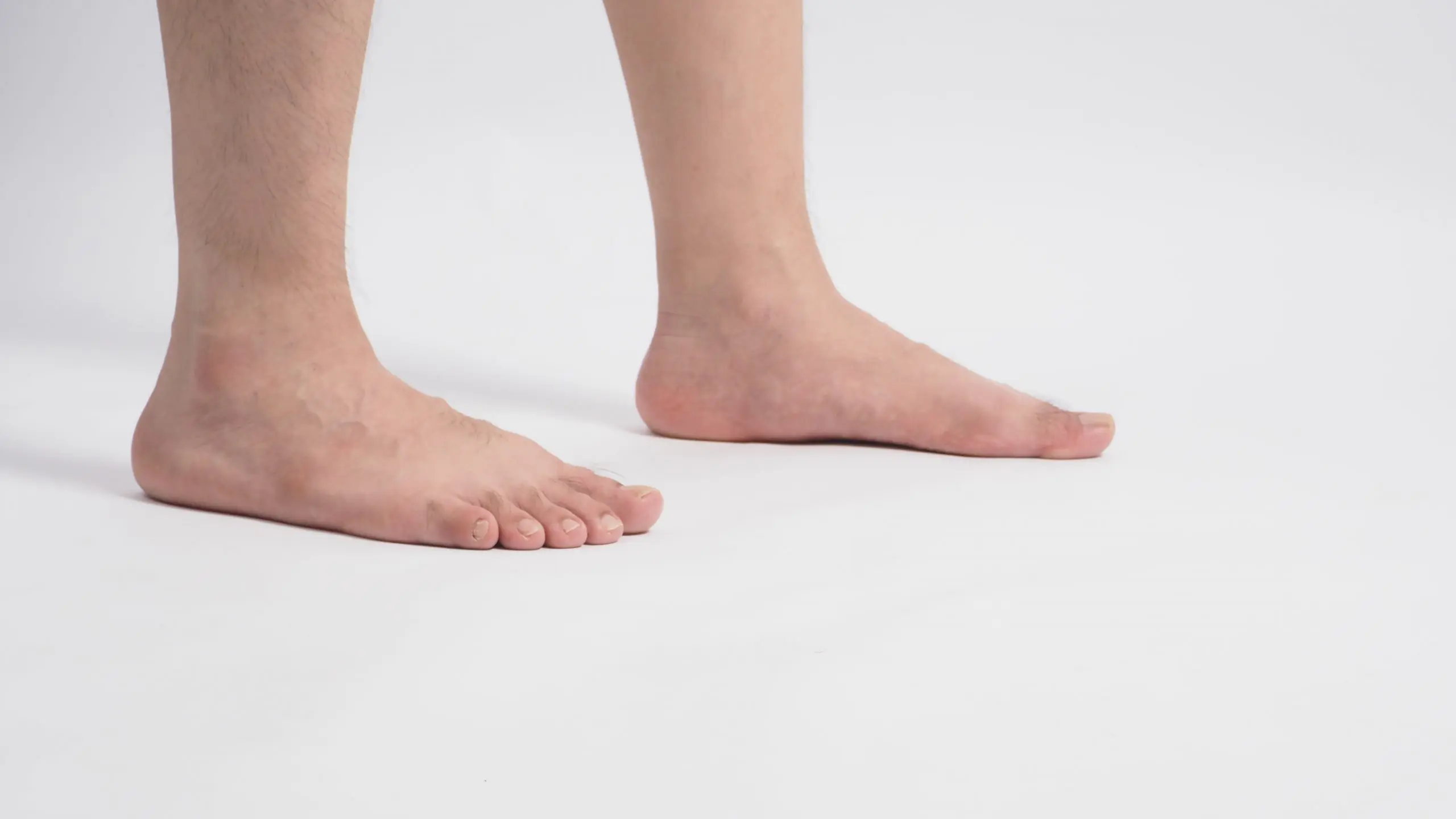
Is there little or no curve in your foot arch? Do you get foot or joint discomfort when you stand? Flatfoot might be to blame for these problems.
Flatfoot is the collapse of the arch of the foot, as the term implies. Flatfoot is most visible when standing or walking, and it can cause serious postural issues. Fortunately, there are treatment options for treating this condition.
Symptoms and related problems
Flat-footed people may feel localized pain in the plantar area. However, this disease can have postural, musculoskeletal, or articular consequences.
The following are some of the most frequent symptoms of flat feet:
- Pain in the arch of the foot
- Joint pain in the ankles
- Change in the shape of the foot
- Feeling of imbalance on uneven ground
- Inward tilting of the heel and knees
- Ducking” gait
- Knee pain
- Lower back pain in the lumbar region
If flatfoot is not treated effectively in the long run, the following issues may arise:
- Plantar fasciitis or heel spur
- Morton’s neuroma
- Metatarsalgia
- Bunion (Hallux valgus)
- Back problems
- Tendon pain
Causes and types of flatfoot
Flatfoot is caused by a number of different reasons. It’s essential to note, however, that it manifests differently in children than in adults.
The congenital type of the disease affects the toddler the majority of the time. In this scenario, the reasons of flatfoot are more likely to be:
- A family predisposition
- Excessive weight
- Ligaments that are too short or too elastic
- A muscular or hypotonic deficit
- A misalignment between the front and back of the foot
When it comes to adults, they are more likely to have acquired flatfoot, also known as valgus foot. Women between the ages of 40 and 55 are more likely to have valgus flatfoot. Several factors contribute to the occurrence of the disease, including:
- Ankle instability (pronation)
- Severe overweight which increases the load on the tendons
- A degenerative disease
- An inflammatory disease such as osteoarthritis
- Trauma or fractures
- Disproportionate lower limbs that cause the body to overcompensate
- The number of pregnancies
- Menopause
Flatfoot prevention
When it comes to congenital flatfoot, it’s possible that the problem will go away as the child grows. Meanwhile, there are certain preventative actions that might help minimize the severity of flatfoot:
- Acquiring orthopedic shoes or inserts: good shoes or inserts provide adequate support for your foot and distribute pressure more evenly.
- Implementing targeted strengthening exercises: nothing beats exercising the plantar muscles to help define the arch of the foot. There are numerous toe-targeting techniques that need very minimal equipment.
Maintaining a healthy weight: Obesity hastens the formation of flat feet, therefore a balanced diet and an active lifestyle are essential in combating this condition.
Flatfoot treatments
Flatfoot syndrome is treatable with less invasive procedures. A foot health professional may recommend the following therapies, depending on the severity of the condition:
- Wearing foot orthotics: Orthotics alone will not be able to restore the original form of the feet. They do, however, alleviate the pain of flat feet. They also help to disperse weight and lower the chance of abnormalities.
- Wearing orthopedic shoes: Orthopedic shoes, like foot orthotics, alleviate discomfort associated with flat feet. A shoe that is tailored to the patient’s morphology makes it easier for him or her to walk around.
Corrective surgery may be an option if the flat foot is rigid or the discomfort is unbearable.
However, there are certain drawbacks to this surgical technique. In most cases, full healing takes longer than a year. In addition, the foot must be immobilized for 6 weeks after the procedure using a cast.
The podiatrist’s contribution
Your treating podiatrist establishes the source of the pathology before referring you to a podiatric surgeon. Before considering surgery for flatfoot, it is critical to determine the type of the deformity:
- Flatfoot with a flexible arch: this condition commonly affects both feet. When coupled with a short Achilles tendon, it can be uncomfortable and disabling.
- Rigid flatfoot: this is a less common kind of flatfoot that occurs more frequently in people with tarsal bone problems. Further medical care is required for rigid flatfoot.
All foot problems, including flatfoot, are identified by the podiatrist. The podiatrist can also identify bone abnormalities such as dislocation or fractures using x-rays.
If no serious issues are discovered, the podiatrist will do everything possible to provide conservative alternatives to their patient. However, when the pain is unbearable, surgery is the only option.
PiedRéseau – Learn more
Are you interested in learning more about flat feet? We publish articles on this topic on a regular basis!
Despite the wealth of information available on the PiedRéseau website, nothing matches a face-to-face consultation with a podiatrist.
Take care of your feet, they’re precious!